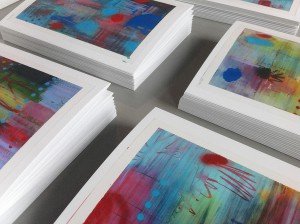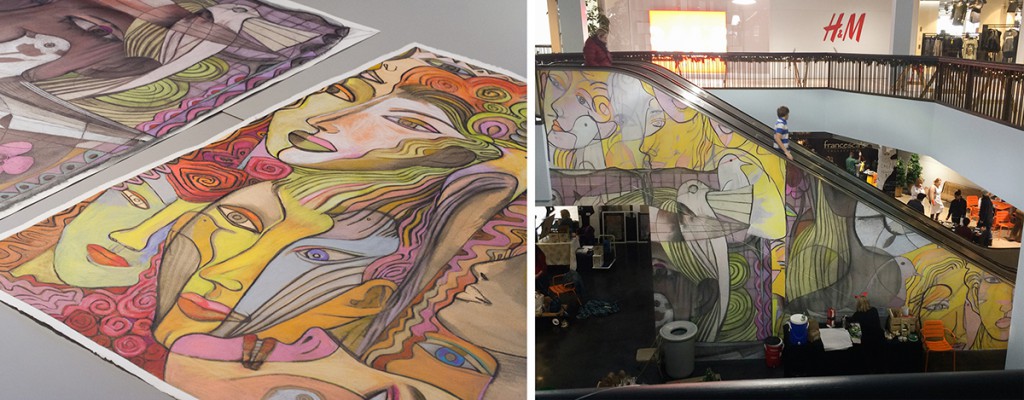Large Format Scanning for Art Reproduction

As a painter, collage artist, illustrator, or some other 2 dimensional artist, how do you digitally catalog your work? Whats the best way to get quality images for your website? How do you start the process of selling reproduction prints?
Large format scanning is the first step to all of the above. There are a number of options and possibilities in the world of digital image capture, including flatbed scanning, Cruse scanning, and digital cameras (including those with scanning backs). Every piece of equipment has its pros and cons.
Flatbed Scanning
At Color Space, our method of choice is flatbed scanning. This option yields extremely high quality results with very flexible working parameters. In general, flatbed scanners are not very large. Even the larger ones are still desktop size. As a result, large artwork is scanned in pieces, then digitally reassembled. While this is time consuming, it allows for a virtually unlimited range of artwork to be scanned, from very small piece to very large. Flatbed bed scanners also have the advantage of highly variable resolution settings, allowing for anything from 1:1, true to size scans, to extreme enlargements. Flatbed scanning is not a touch less process. Work must be set face down on the scanning glass. In the hand of a skilled technician familiar with safe art handling, this is generally not a problem, but may preclude its use of some artwork (such as unfixed pastel or paintings with significant, fragile relief).
Cruse Scanning
Cruse scanners are large machines capable of scanning large artworks of various sizes. The set up is more like a traditional copy stand that a flatbed scanner in that there are lights to be  manually adjusted in order to illuminate the artwork. In the case of a cruse scanners, the scanning arm or the artwork bed will move to cover the entirety of the scanning area. Advantages of a Cruse scan include the ability to scan large works in one piece, as well as their touch less operation. No part of the scanner come into contact with the face of the artwork. Unfortunately, resolution ranges are limited. Often to only 300-600 dpi, meaning that enlarging a small work is not always possible. Additionally, due to the very high cost of a Cruse Scanner, single scan costs can be astronomical (3-4 times that of a good flatbed scan).
manually adjusted in order to illuminate the artwork. In the case of a cruse scanners, the scanning arm or the artwork bed will move to cover the entirety of the scanning area. Advantages of a Cruse scan include the ability to scan large works in one piece, as well as their touch less operation. No part of the scanner come into contact with the face of the artwork. Unfortunately, resolution ranges are limited. Often to only 300-600 dpi, meaning that enlarging a small work is not always possible. Additionally, due to the very high cost of a Cruse Scanner, single scan costs can be astronomical (3-4 times that of a good flatbed scan).
Better Light Scanning
Better Light Scanning Backs are effectively digital backs for large format cameras. The resulting image captured is more akin to an extremely large photograph than a scan, as is the process of making the image. This option requires a traditional copy photo setup, including external lights and even a camera and lens. The picture is then taken by the better light back, a small scanner on the back of the large format camera. The resulting images are photographic in nature. In this case lighting can be moved and altered to create different looks on the work (something than cannot be done with flatbed scanning). In general the resulting images are not huge and won’t be suitable for extremely large prints, but are definitely suitable for small to midsize prints (up to 30 inches) or web use.

